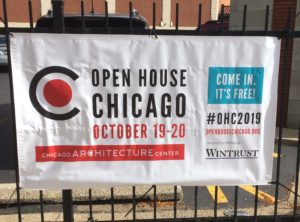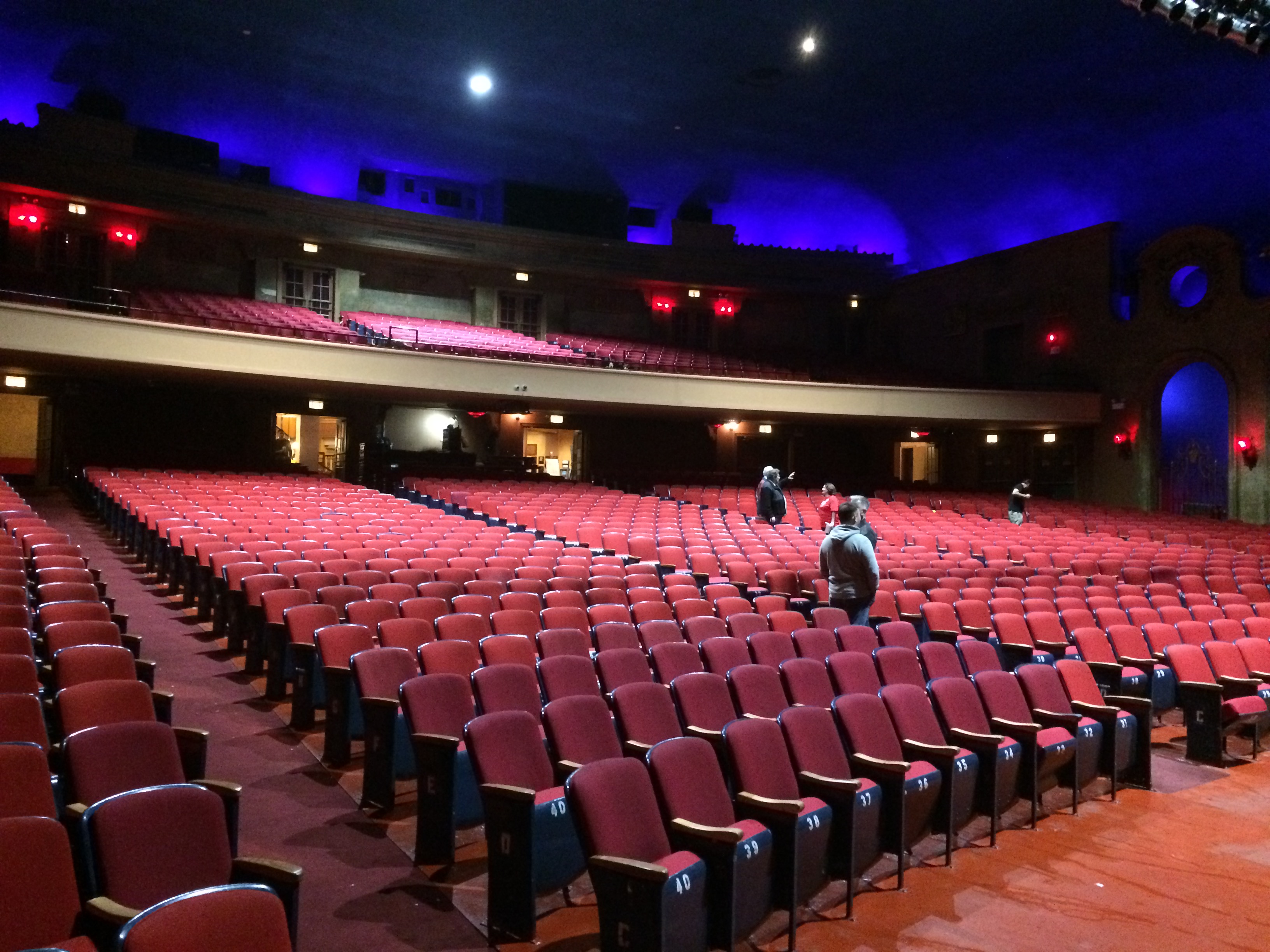During Open House Chicago last month, we saw this.
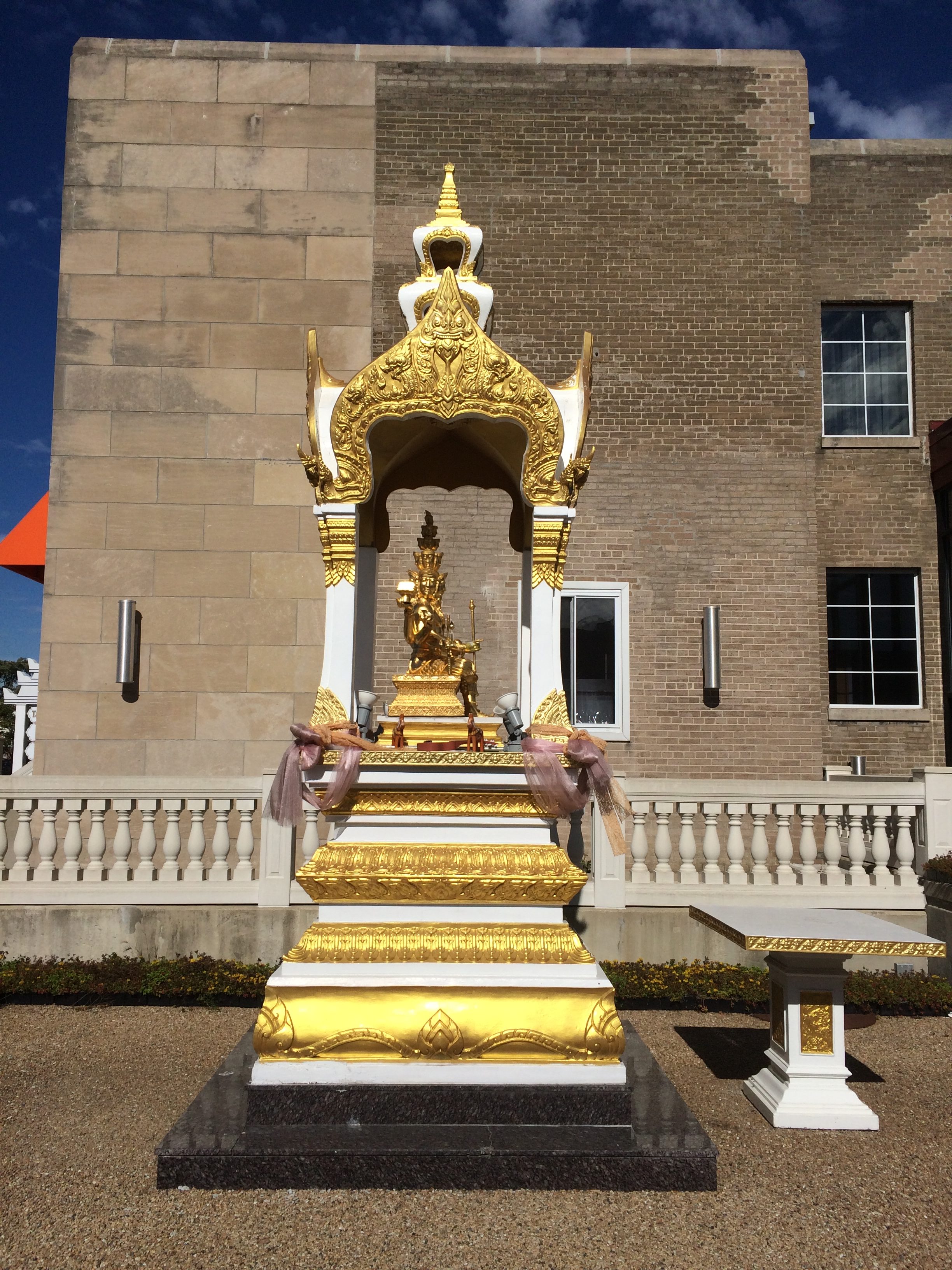 Nothing to do with the event. It’s a Thai shrine of some kind. Not sure whether it counts as a spirit house, but the building behind it (from this angle) is a Thai restaurant — Taste of Thai Town at 4461 N. Pulaski. Previously, the building housed a Chicago PD station. We ate lunch there and were well satisfied with the meal.
Nothing to do with the event. It’s a Thai shrine of some kind. Not sure whether it counts as a spirit house, but the building behind it (from this angle) is a Thai restaurant — Taste of Thai Town at 4461 N. Pulaski. Previously, the building housed a Chicago PD station. We ate lunch there and were well satisfied with the meal.
In Virginia last month, Ann and I ate at Moose’s by the Creek in Charlottesville. It’s a large diner, decorated with a couple of enormous moose heads, many antlers and other reminders of sizable members of the deer family. Had some good sandwiches there, and when I paid, the woman at the register — it might have been co-owner Melinda “Moose” Stargell herself — said she wanted to take our picture under a major pair of antlers.
For Moose’s by the Creek’s Facebook page. Lots of customers have their pictures there. She said we were free to download it for ourselves, so here it is.
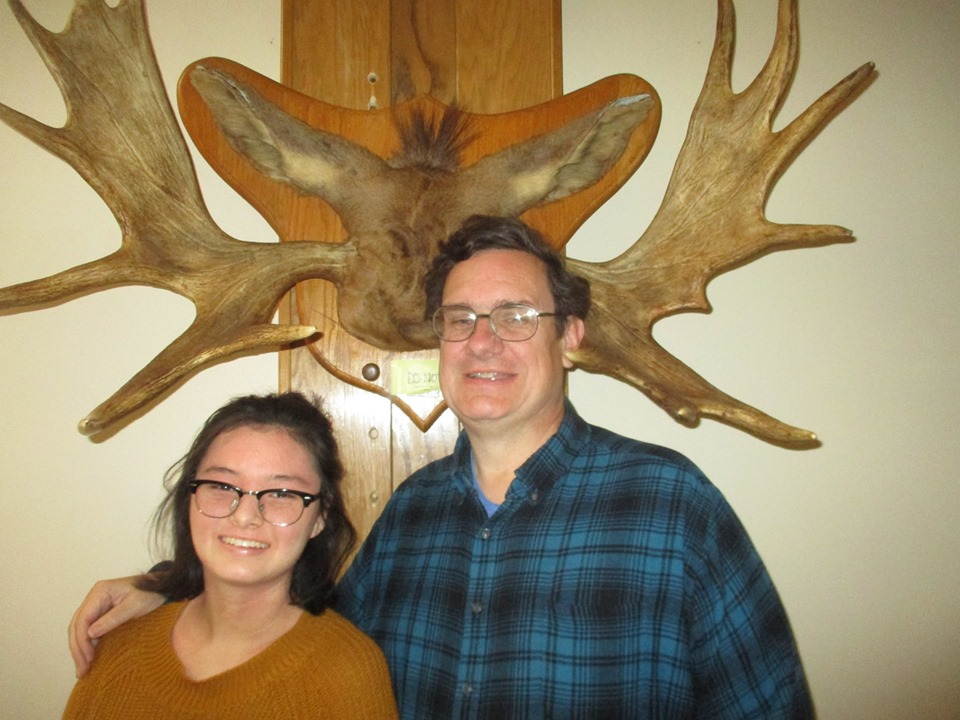
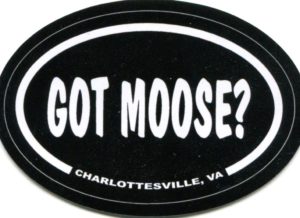 I had to be careful not to bump up against any of those points. Moose’s by the Creek also gave us some stickers.
I had to be careful not to bump up against any of those points. Moose’s by the Creek also gave us some stickers.
We had dinner the first evening in Richmond at Belmont Pizzeria in the Museum District, a pleasant old neighborhood not too far from VCU, so maybe students eat its pizza too. Mostly it was takeout, with the large kitchen completely visible from the ordering counter, but there were a few tables, so we sat down to eat as a parade of people came in to get their orders. It was a popular joint, full of wonderful smells, and when we got our pizza — which had shrimp on it — we found it to be wonderful too.
Belmont Pizzeria has a curious bit of wall art on the outside.
Even without the art, it was the best meal I had in Virginia, though the hipster waffles were a close second and, as I said, Moose’s was good too.

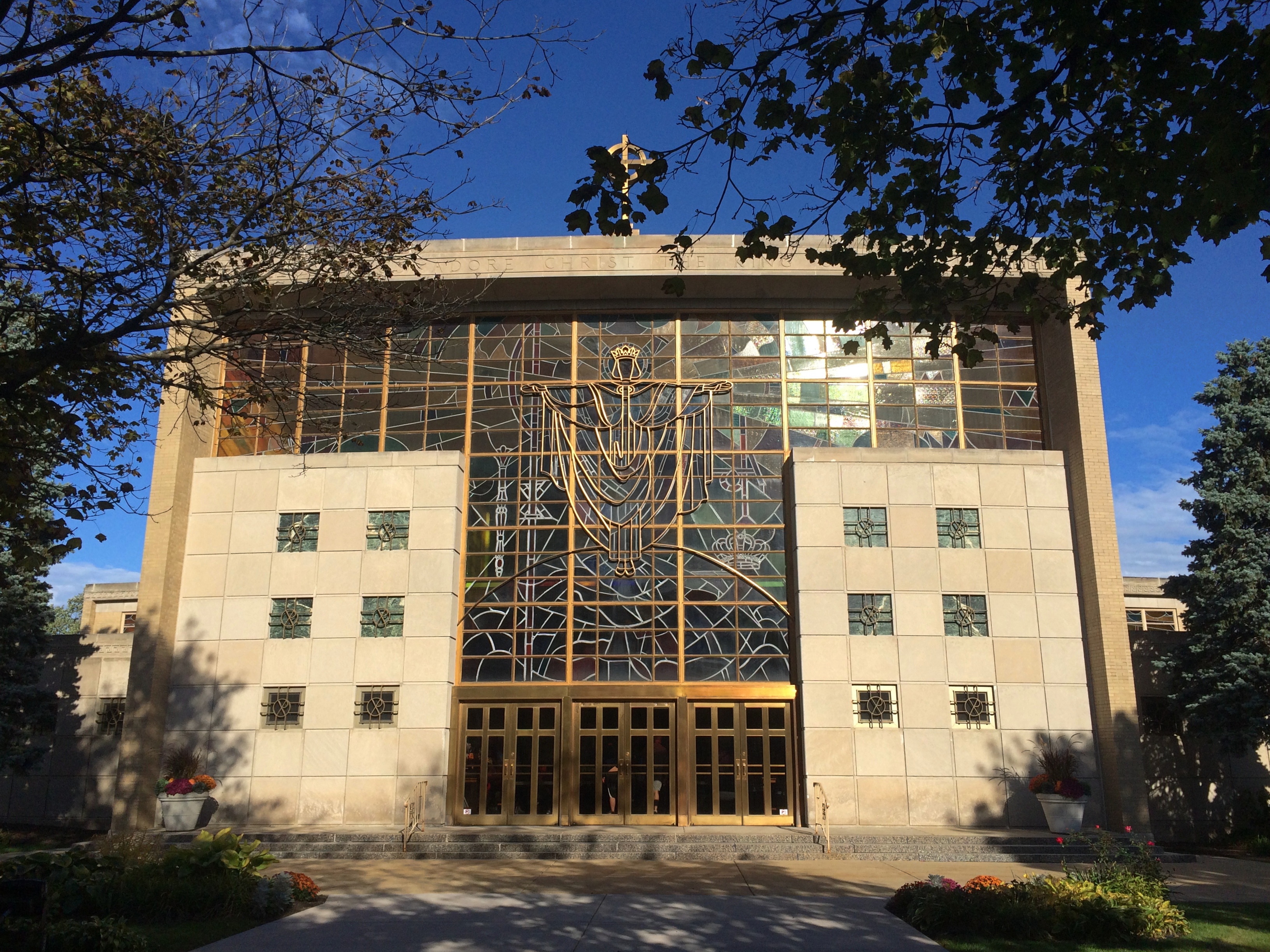

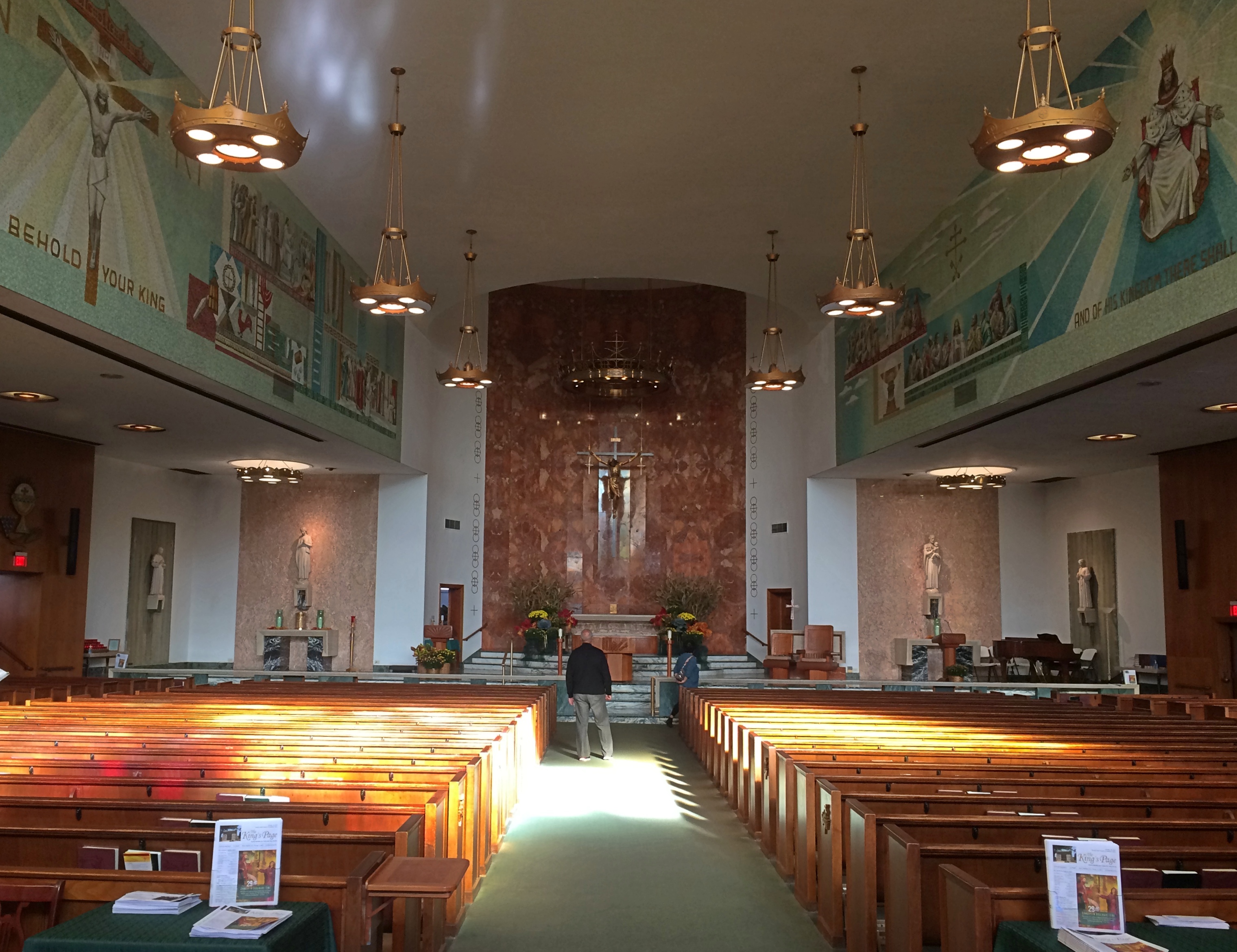
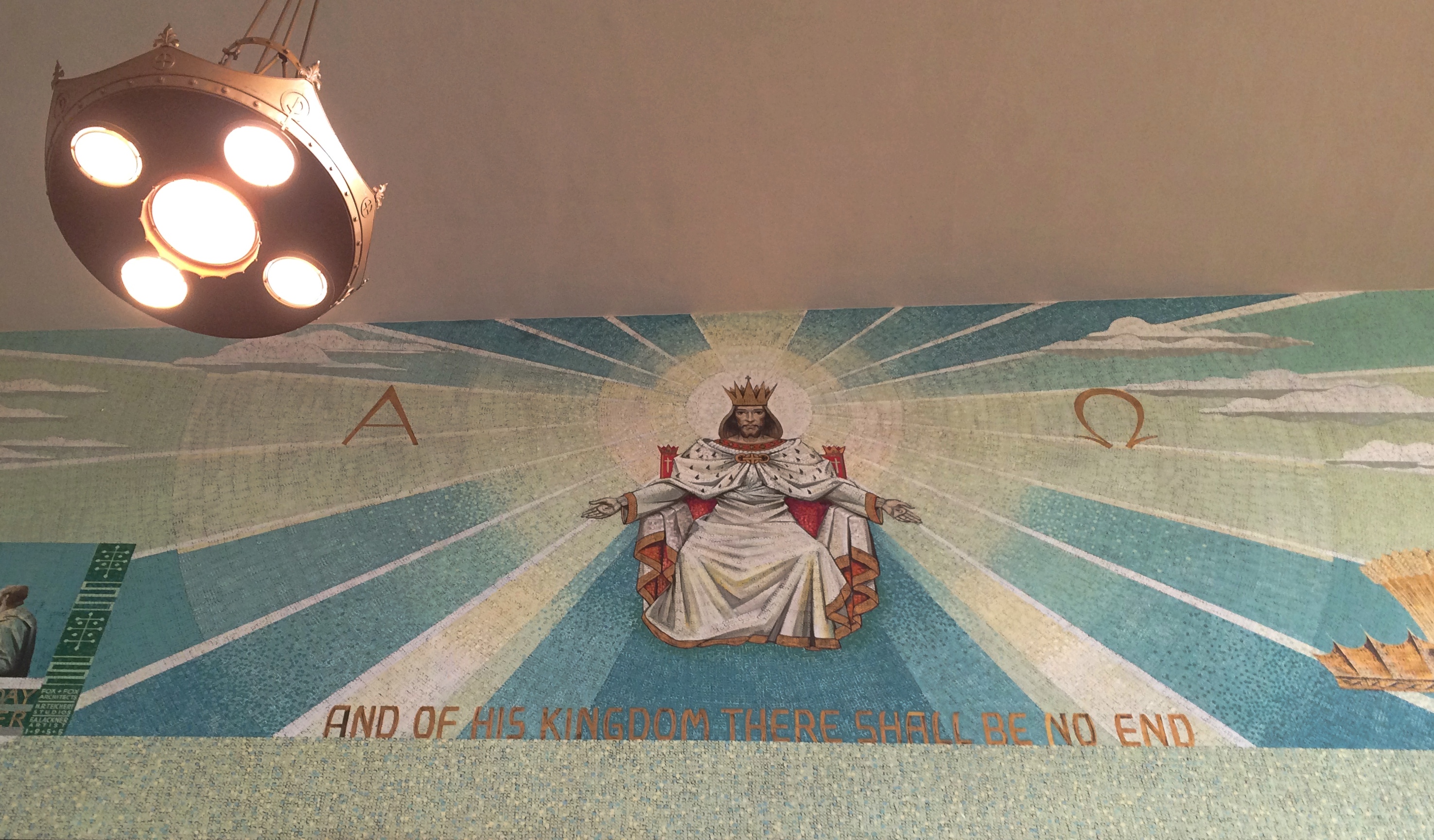

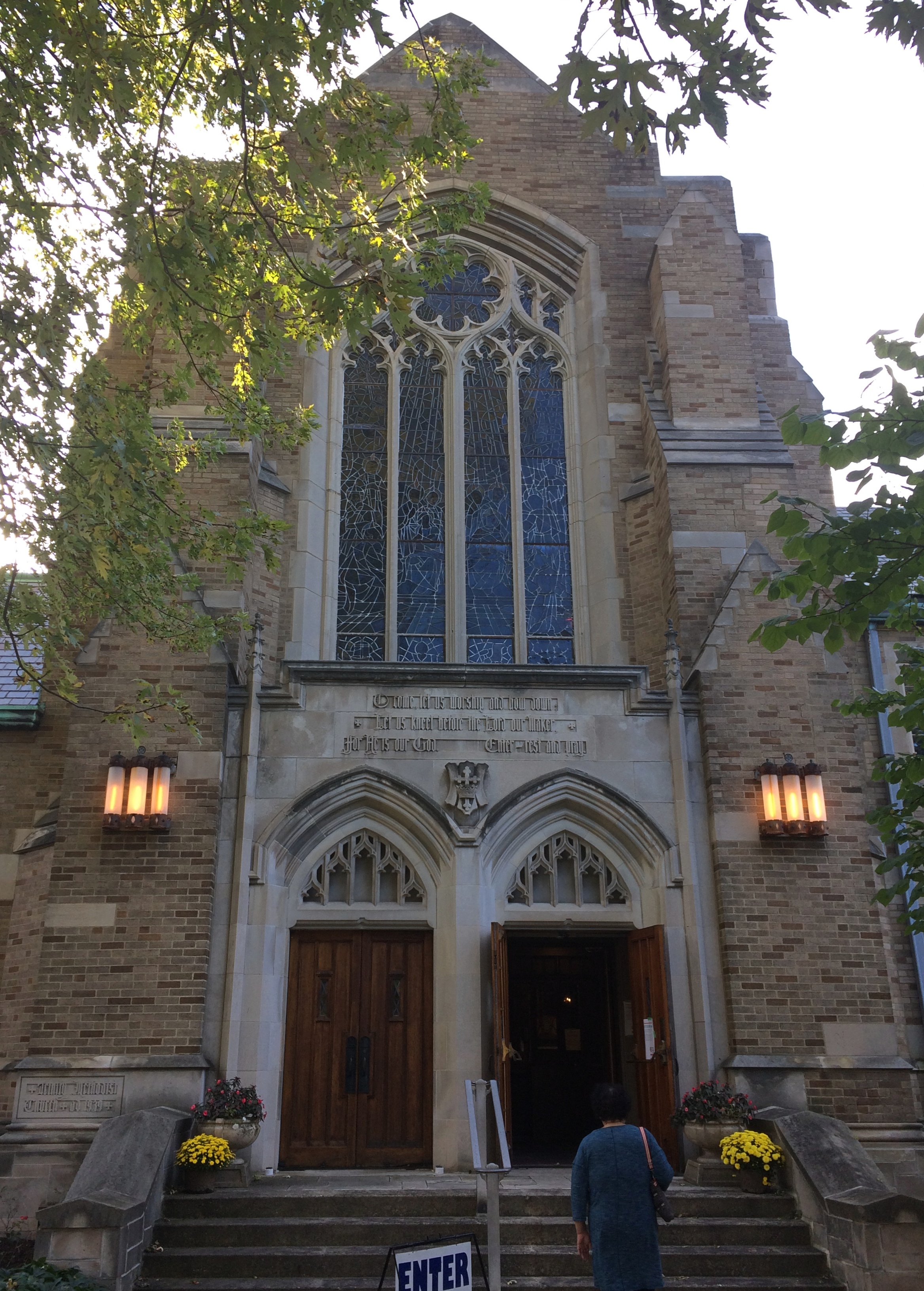

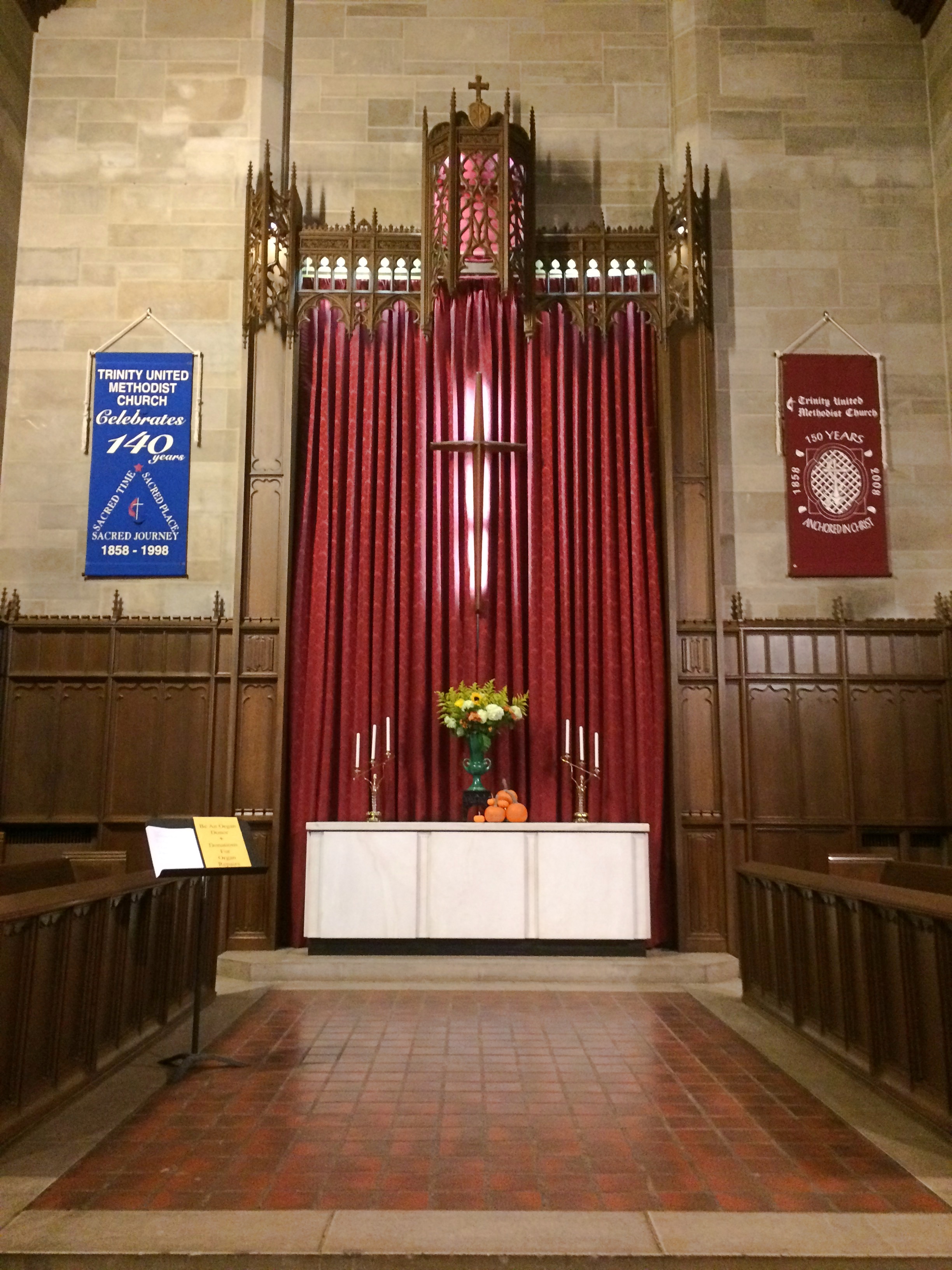



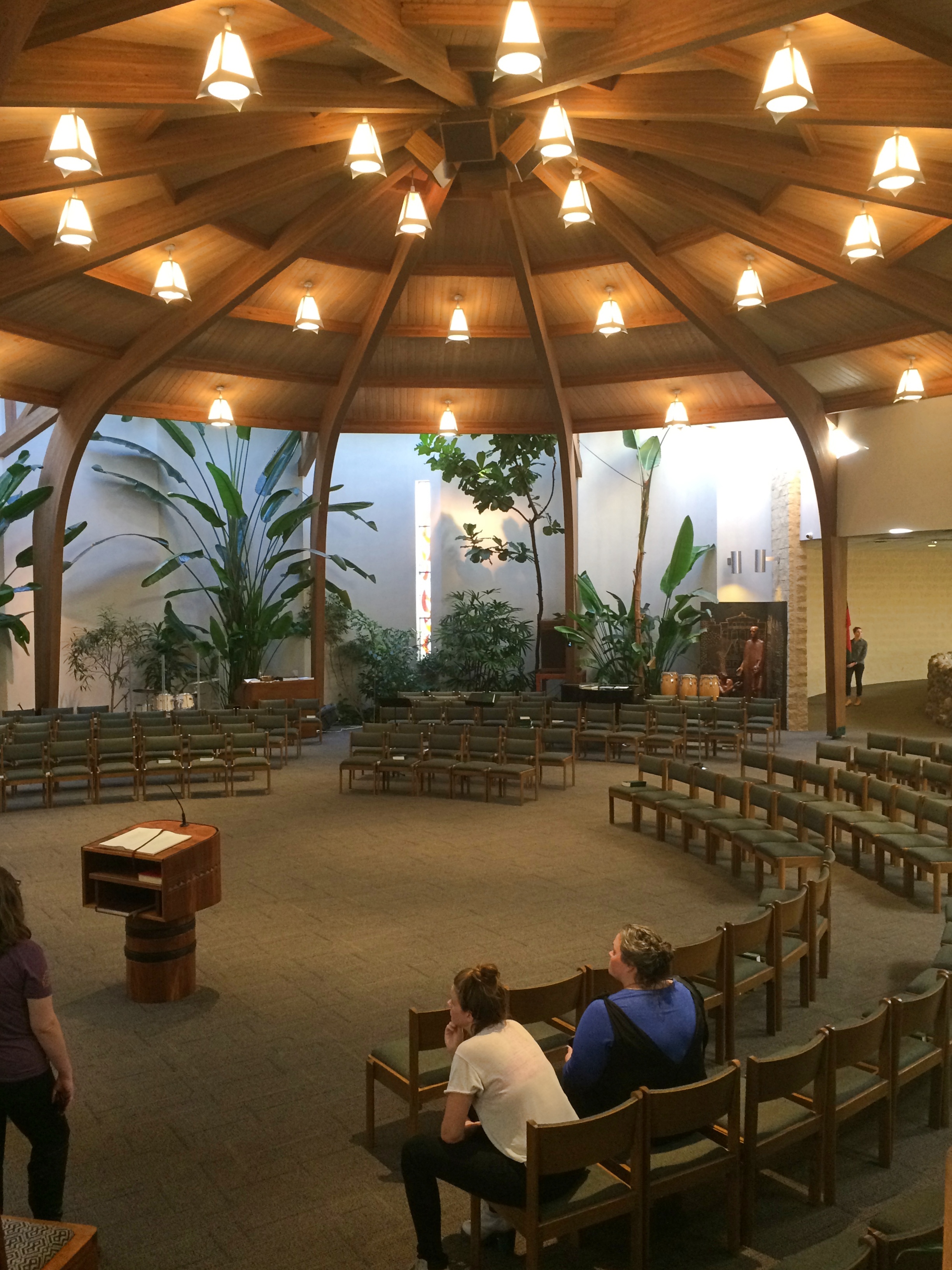
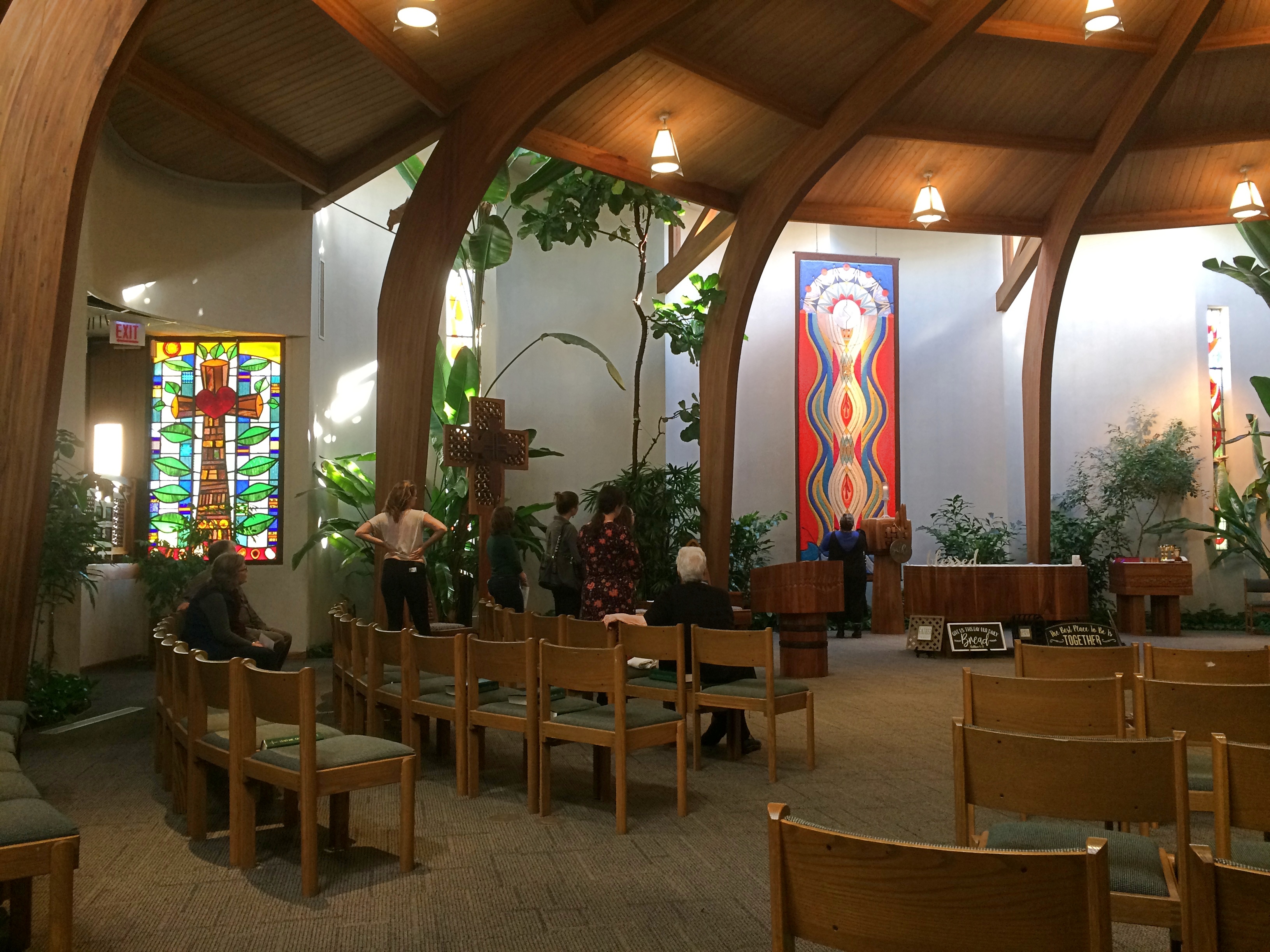

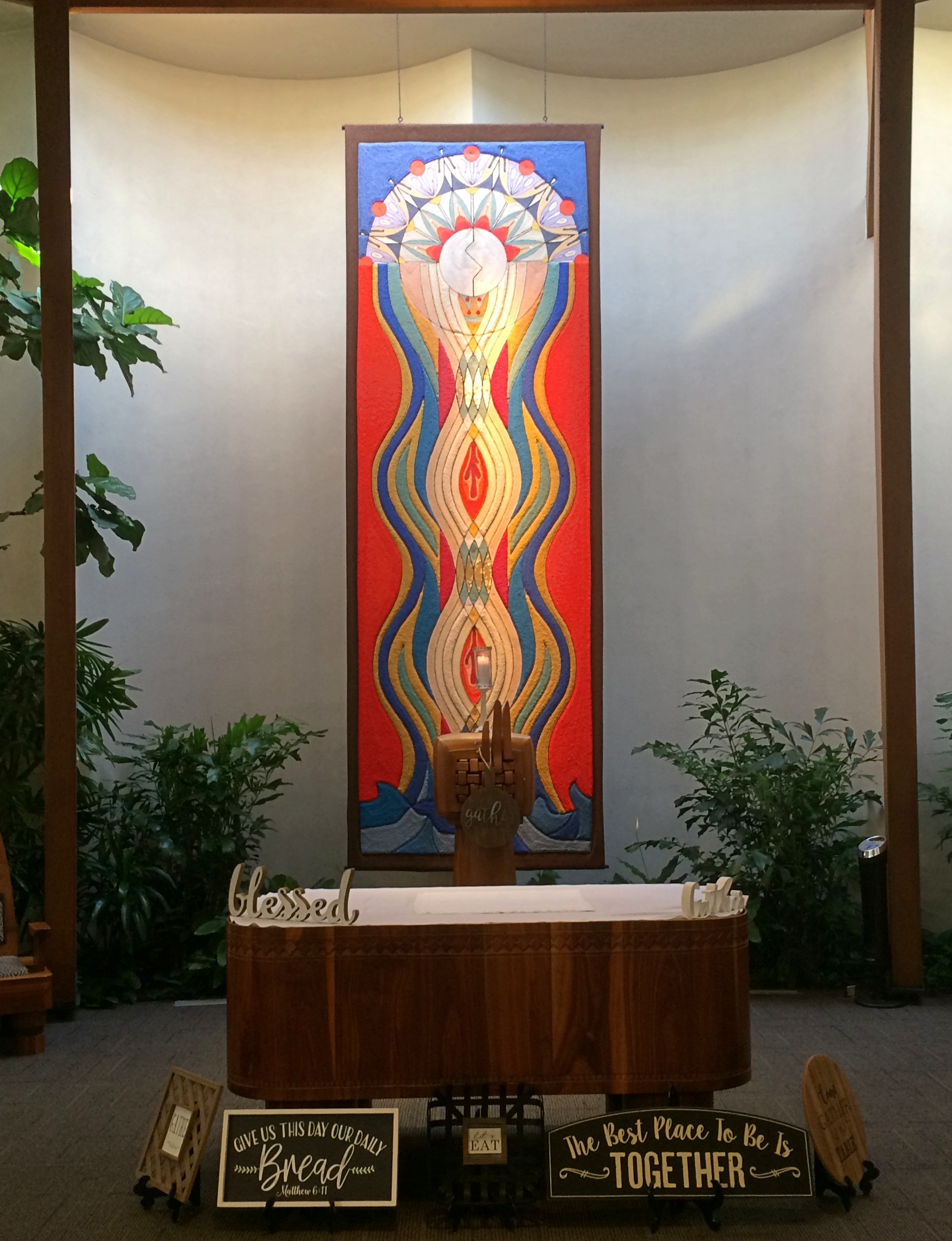

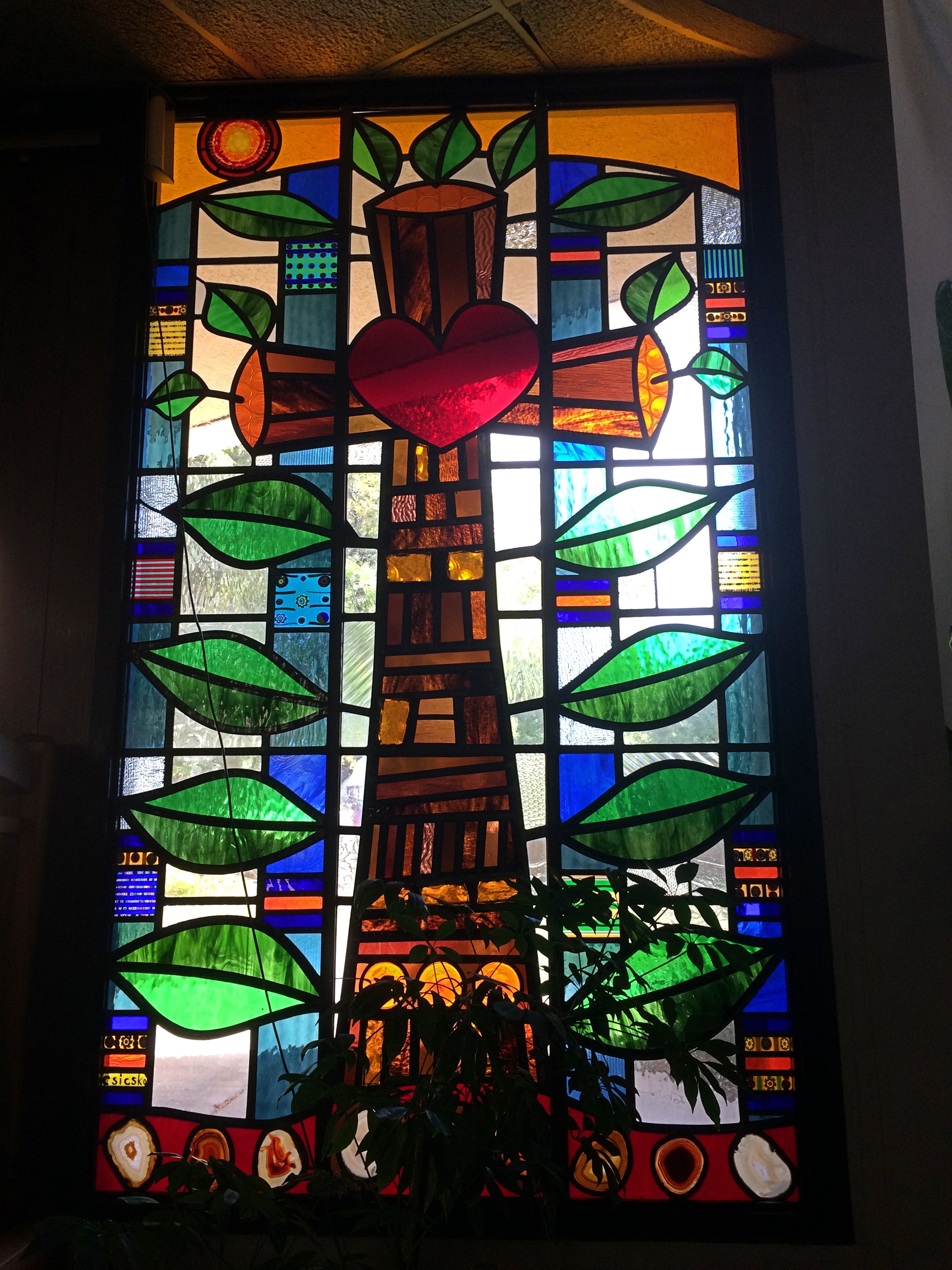
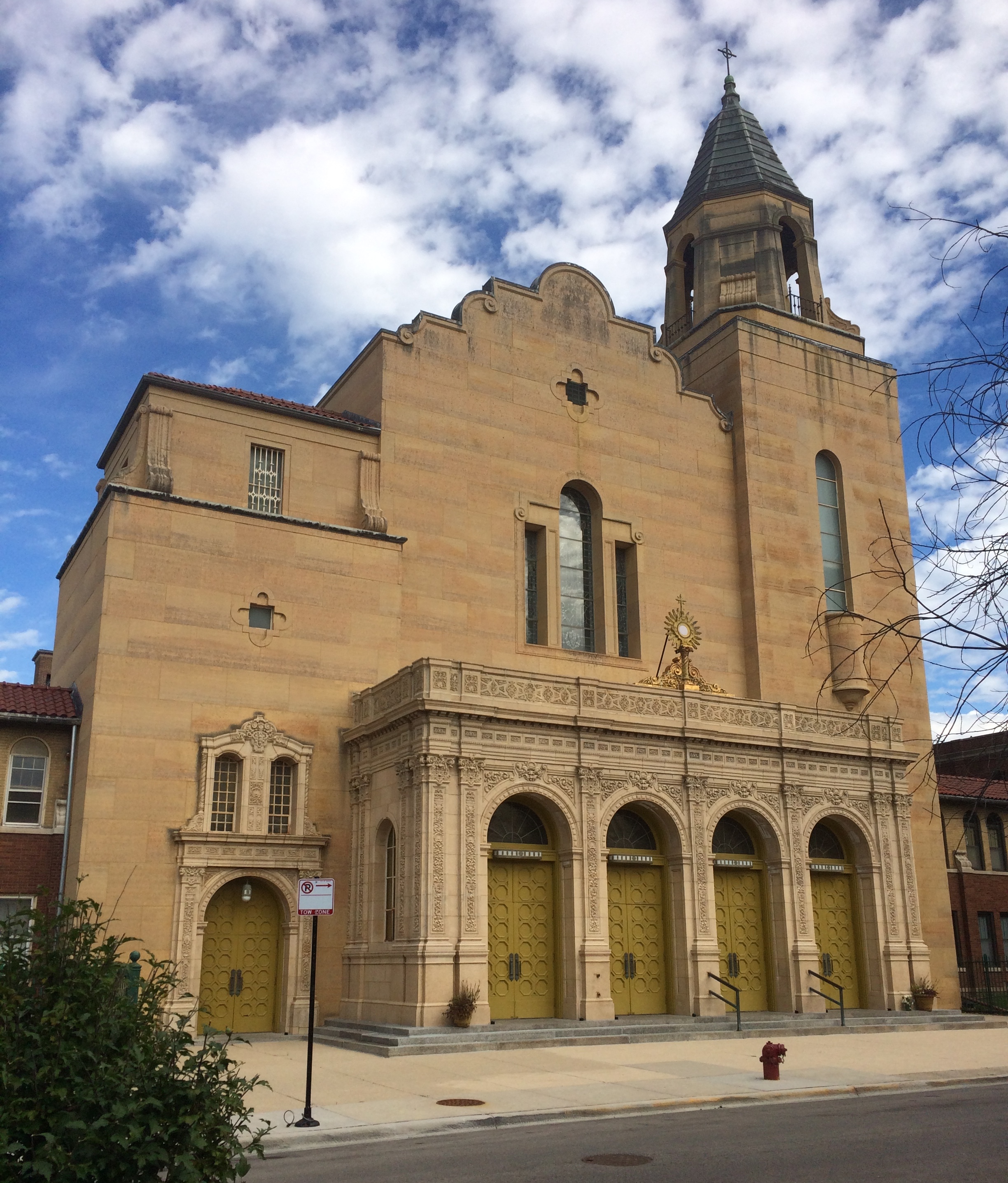
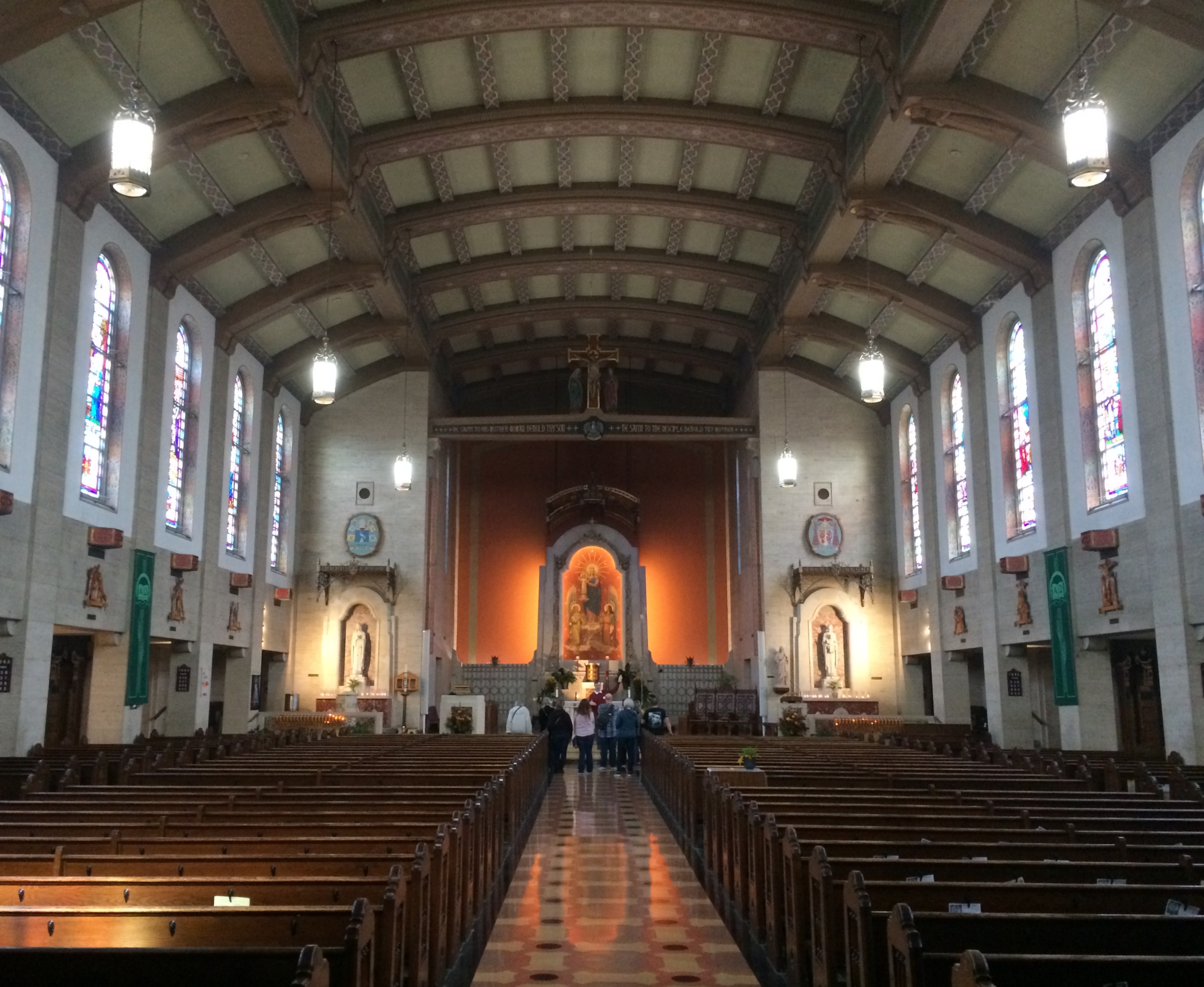
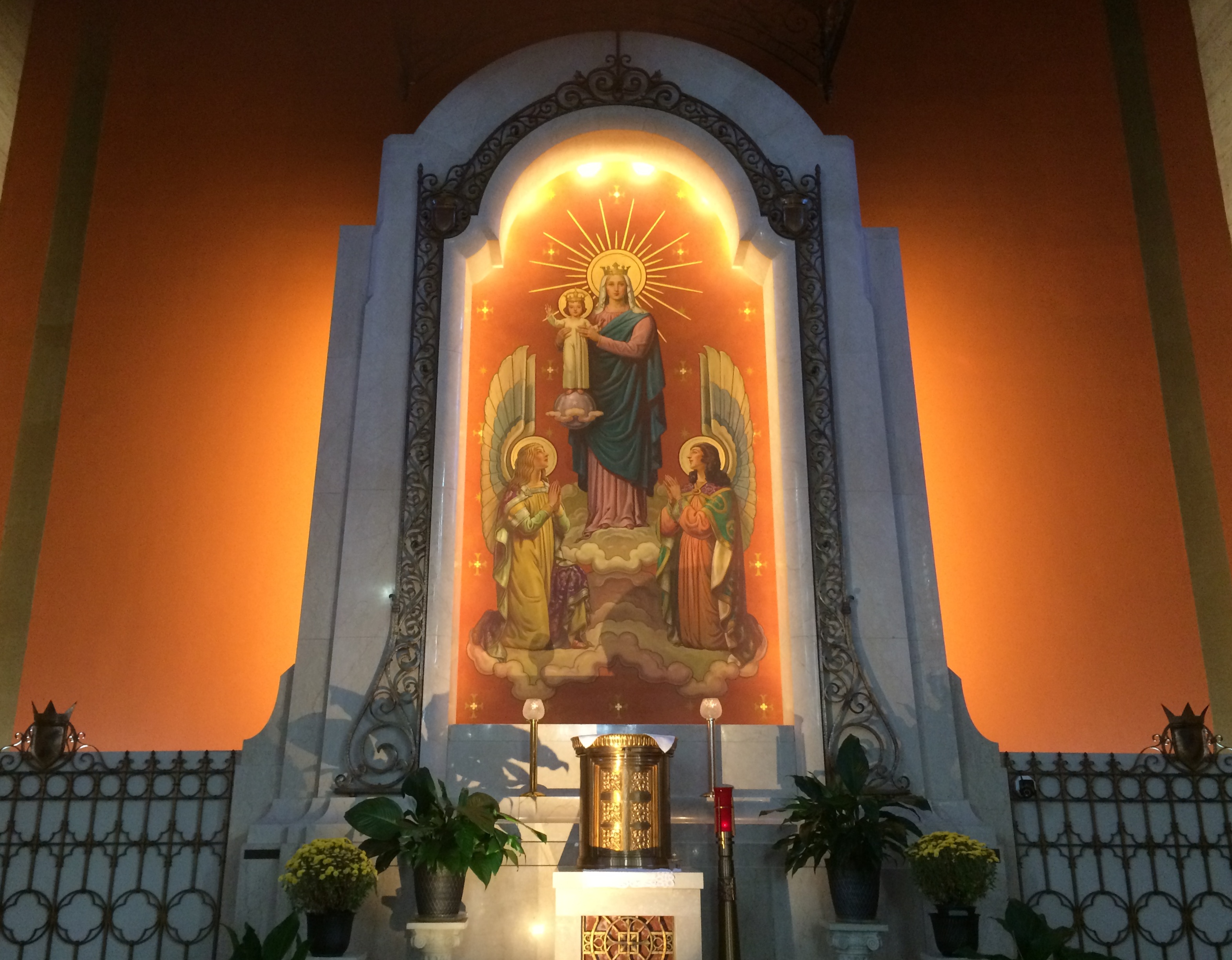
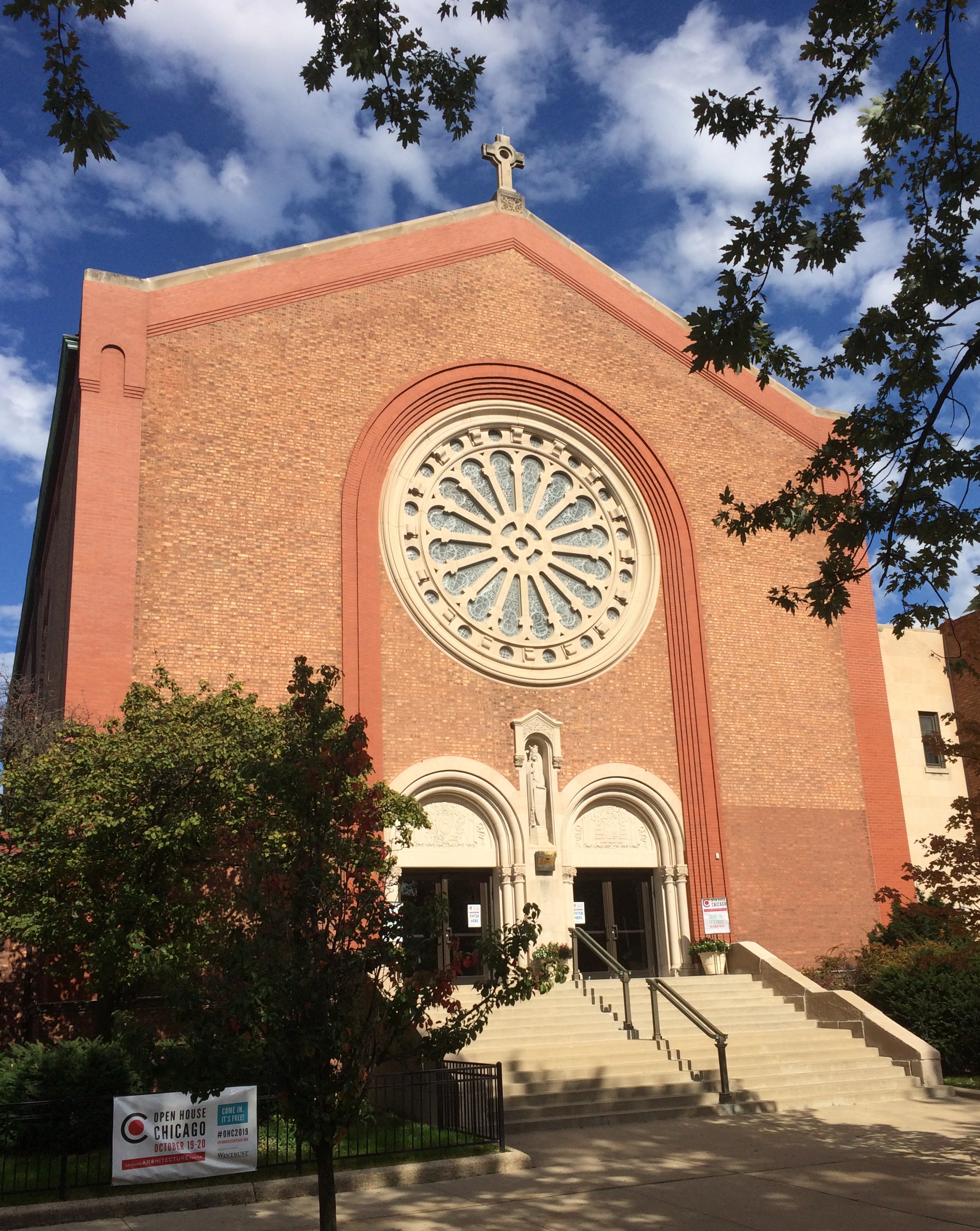
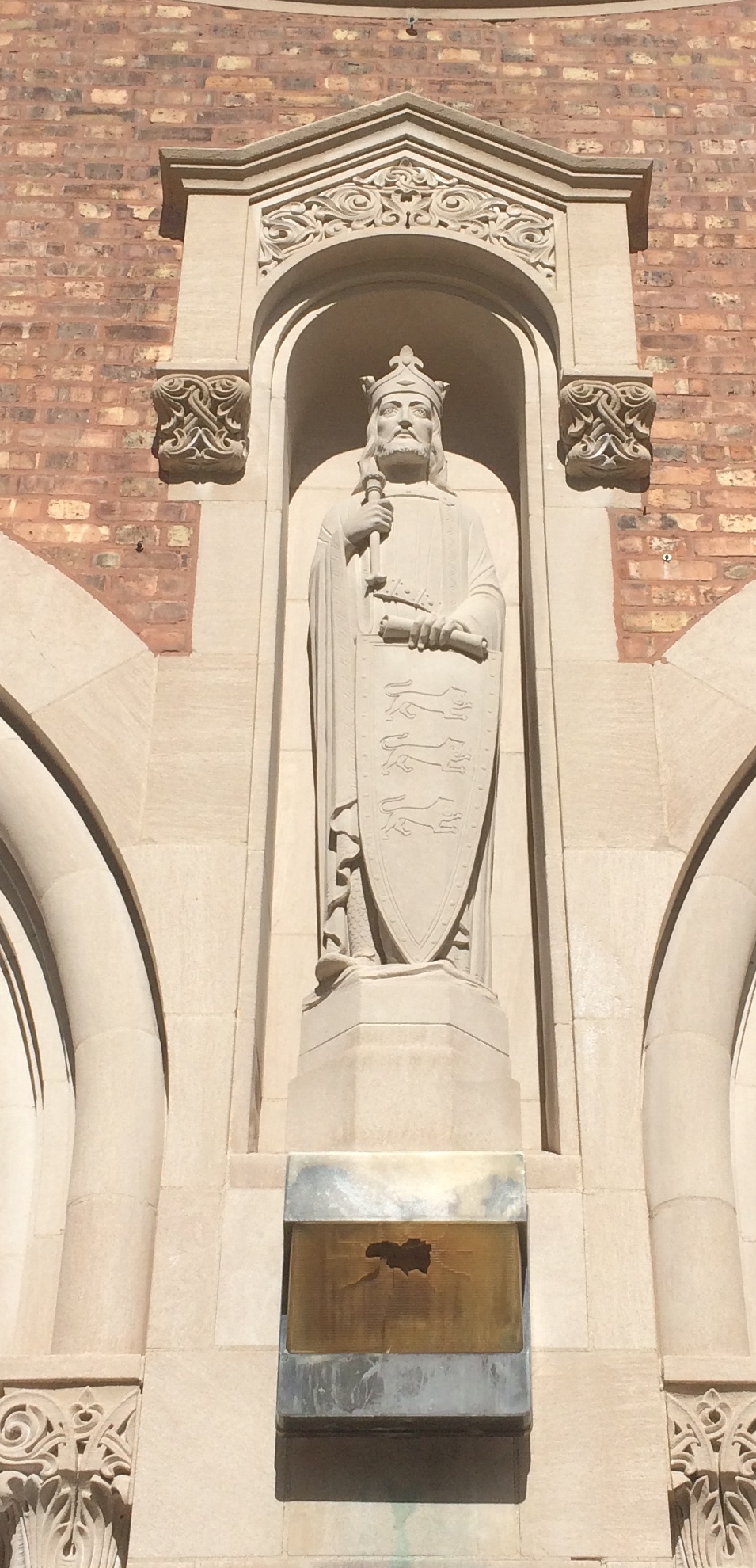
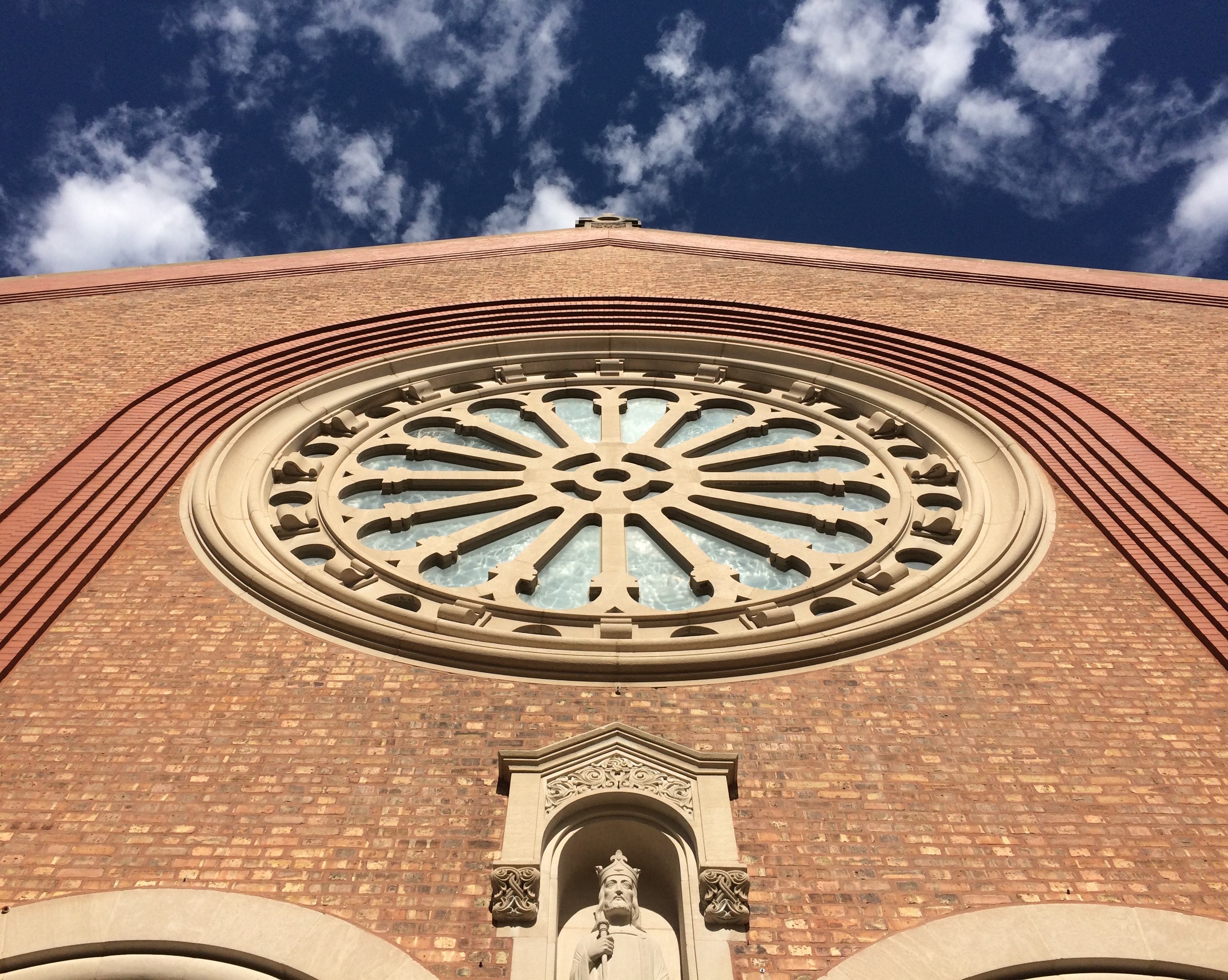


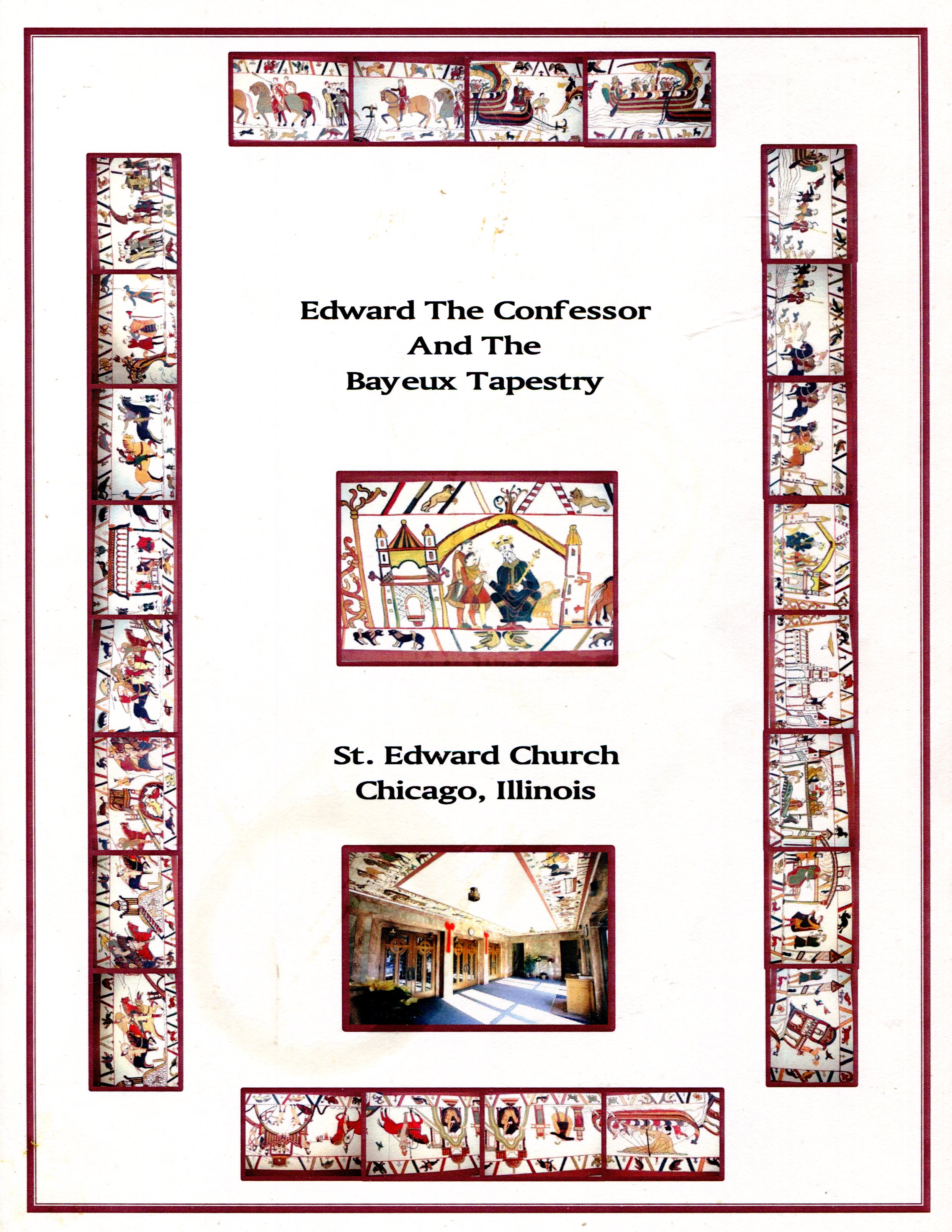
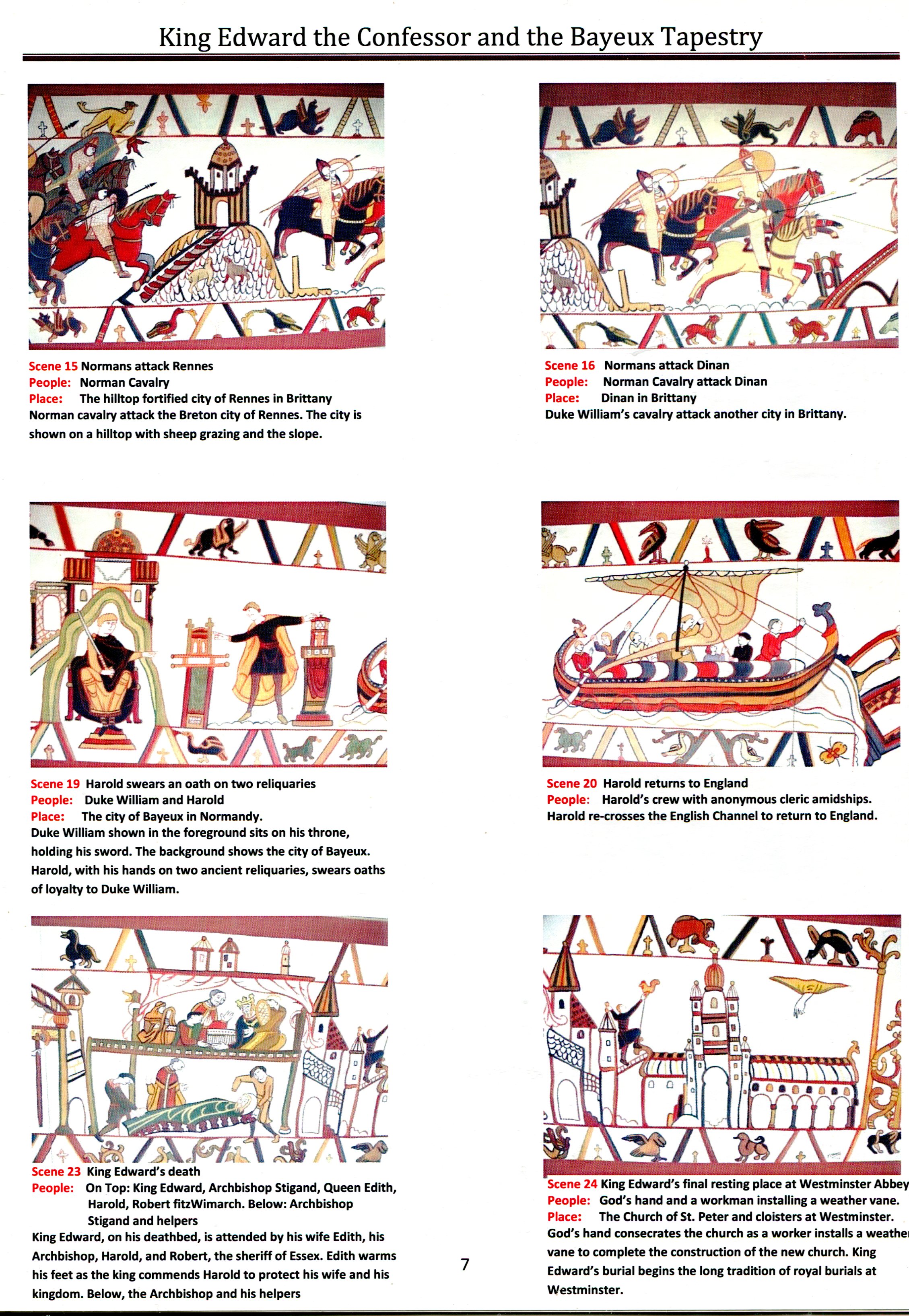
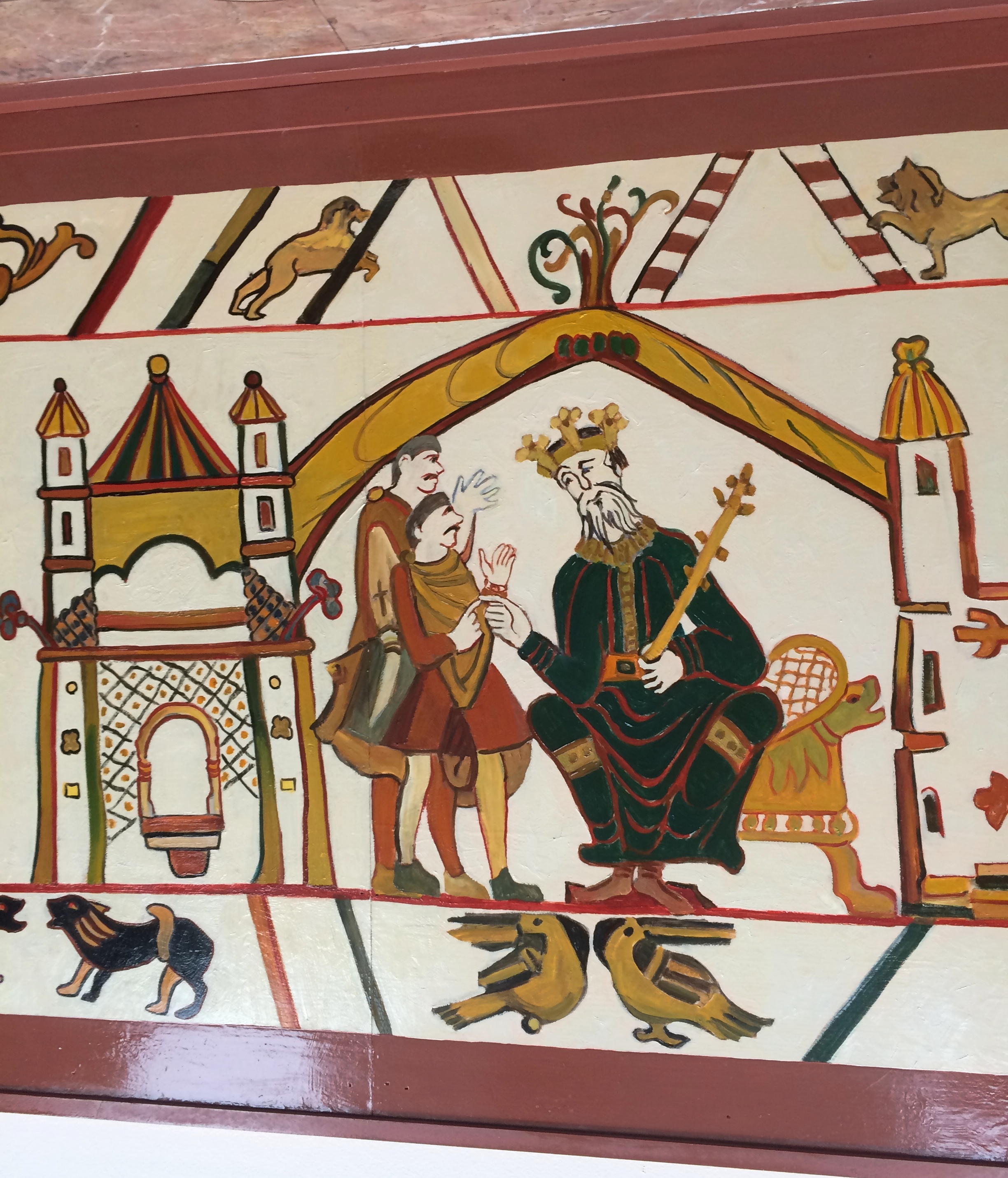
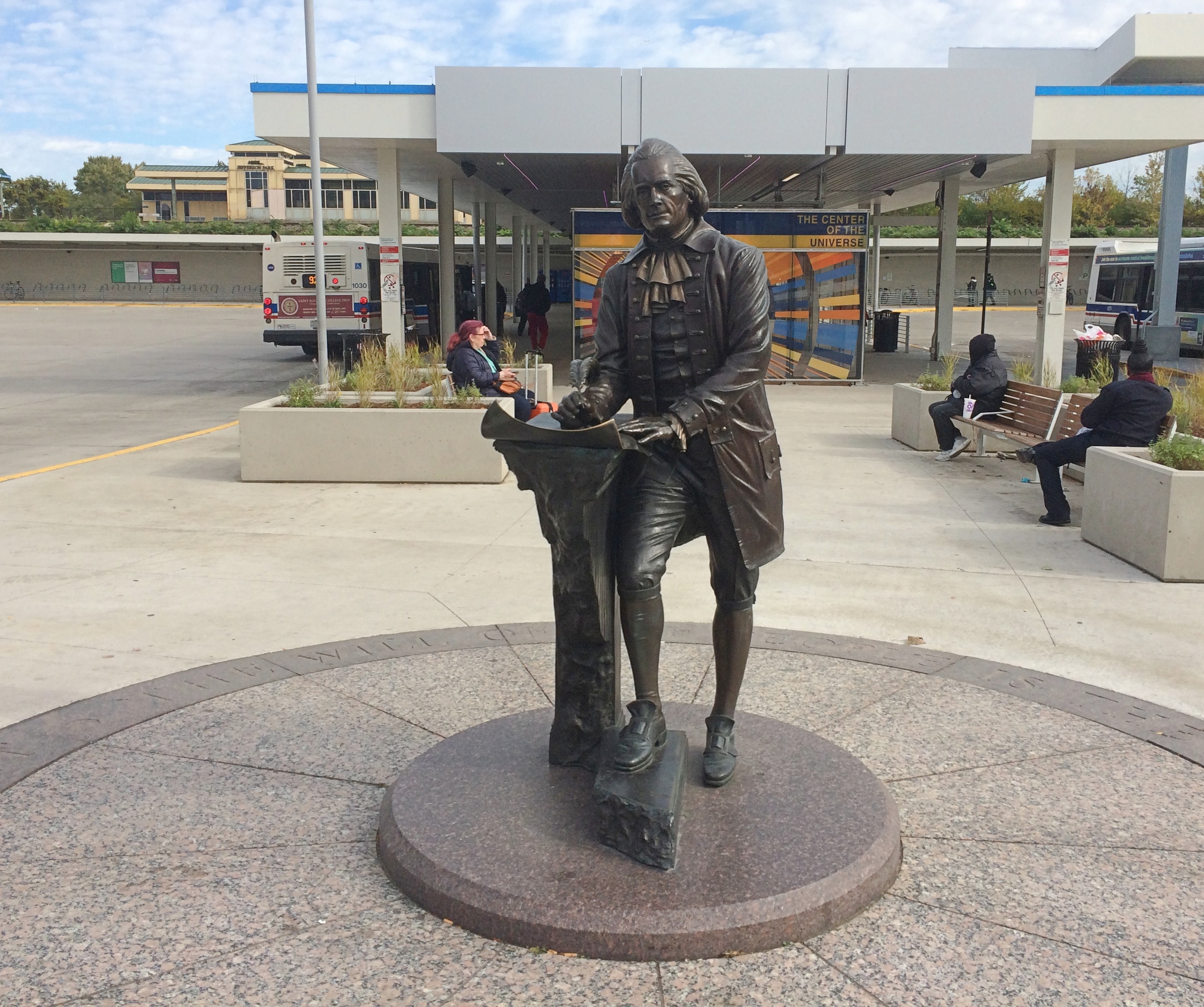 He’s standing in front of an open-air CTA bus terminal. Actually, an intermodal station, since the Jefferson Park El stop is back there, too.
He’s standing in front of an open-air CTA bus terminal. Actually, an intermodal station, since the Jefferson Park El stop is back there, too.